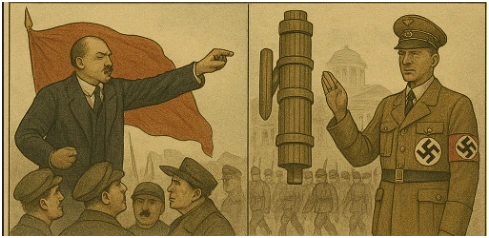
Get in Touch
We will get back to you within 24 hours.
Welcome to MVS Blog

Or
How did industrialization impact the class structure, family and women's work in 19th century Europe?
Answser – Introduction
The First Industrial Revolution in the 18th century changed production through machines. In the late 19th century, new technologies and energy innovations boosted industries. The rise of electricity, steel, and transport expanded economic activities and transformed daily life. This era also brought major changes in social structure, family systems, and
women’s roles.
Second Industrial Revolution (1870-1914) : The revolution linked to innovations in electrical energy, steel (Bessemer process), petroleum, and machine tools—leading to faster and more efficient production—is called the Second Industrial Revolution/Technological Revolution. It began in 1870 and spread across Britain, France, Germany, the United States, Japan, Russia, and Italy.
Causes of Second Industrial Revolution

1. Innovation and Use of Electric Power : In 1879, Thomas Alva Edison invented the electric bulb, increasing electricity use in factories and homes. Electric power made machines faster and more efficient, boosting industrial output. Night shifts became possible, improving productivity and energizing the Second Industrial Revolution.
2. Development of the Steel Industry : In 1856, Henry Bessemer developed a technique to produce strong, cheap, and durable steel. This revolutionized railways, bridges, ships, and construction. Heavy industries got better raw material, accelerating industrialization and large-scale development.
3. Expansion in Transport and Communication : The 19th century saw rapid railway expansion. In 1866, the first Atlantic telegraph cable was laid. This enabled fast transfer of goods and information, boosting trade and global connectivity. Improved communication empowered industries and drove economic growth and globalization.
4. Rise of Scientific and Technological Laboratories : By the late 19th century, labs like Bell Labs fostered inventions and innovation. These advances provided industries with better tools and machines, accelerating production. Scientific research promoted progress and gave new direction to the Second Industrial Revolution.
5. Market Expansion and Consumerism : Industrial goods became cheaper, increasing demand and consumerism. As people’s purchasing power grew, mass production followed. This led to higher output, more jobs, and trade expansion—becoming a key driver of the Second Industrial Revolution.
6. Working Class and Urbanization Through Social Change : Industries needed large numbers of workers, prompting rural migration to cities. A new working class emerged, and towns developed around factories. This shift in population and society led to rapid urbanization, a major feature of the Second Industrial Revolution.
Impact of the Second Industrial Revolution
1.Economic Impact : The second industrial revolution led to a boom in big industries, banking, and capital investment. Production and export increased. America, Germany, and Japan emerged as new industrial powers.
2.Social Impact : The working class expanded, urbanization grew rapidly. Lifestyles changed, social inequality increased. Trade unions and socialist movements began.
3.Political Impact : Industrial capitalists became powerful and influenced governments. Labor laws were introduced, and ideologies like socialism and Marxism emerged.
4.Technological Impact : Major advances occurred in electricity, steel, telephones, radios, and chemical industries. Production became faster and cheaper, marking the beginning of scientific and technological innovation.
The impact of industrialization on class structure, family and women in the 19th century
1. Impact on Class Structure : Industrialization reshaped society’s class structure. Wealthy capitalists controlled resources, while workers faced exploitation. A new middle class of salaried professionals emerged. Society split into two main classes, prompting labor movements for rights.
2. Impact on Family : Before the Second Industrial Revolution, families were joint and children were economic assets. Industrialization brought social and economic changes—children became dependents, birth rates fell, living standards improved,
and infant mortality declined, altering traditional family systems.
3. Impact on Women’s Work : Before industrialization, women handled domestic tasks. With factory labor demand, they joined textile and metal industries. During the Second Industrial Revolution, women became telephone operators, teachers, and nurses. Education empowered them, and feminist movements emerged for equality and suffrage.
Evaluation
The Second Industrial Revolution accelerated technological and economic development, leading to increased production and the emergence of new industries. Its social impacts include changes in class structure, transformations in the traditional family system, and expansion of women's sphere of work. However, this change also brought challenges of social inequality and urbanization. Therefore, its impact was a mix of positive economic growth as well as social conflict and changes.
Conclusion
The Second Industrial Revolution brought significant social changes along with economic and technological progress. It gave rise to new industries, altered the class structure, transformed the traditional family system, and expanded women's roles in the workforce. This led to positive advancement in both social life and economic.
0 Response